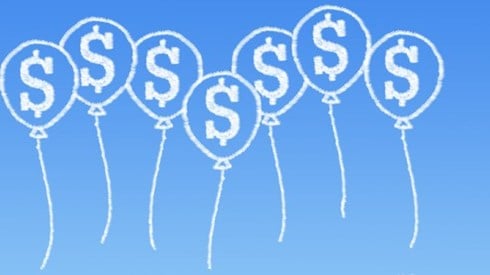Social Inflation: The Drumbeat Continues

John M. Foehl | February 10, 2020

Last October, we published an article titled "Five Thoughts on Social Inflation" in which we cautioned captive owners and managers to take a hard look at this phenomenon. A reader was kind enough to alert me to a story in the Wall Street Journal I had missed, titled "The Specter of Social Inflation Haunts Insurers." In the December 27, 2019, article, author Telis Demos begins by stating the following.
The price of milk and gasoline may be stable these days. But some insurance executives feel like the 1970s are back again when it comes to other kinds of inflation.
Insurance executives in the United States have recently expressed a wave of concern about something called "social" inflation. In insurance-industry parlance it typically refers to an upward creep in perceptions by an injured party of what they are owed, their willingness to pursue that via the legal system, and what that means for insurance policies covering companies' liabilities.
A steady drumbeat of concern suddenly got louder when property and casualty insurer Travelers reported quarterly earnings in late October and increased its loss reserves by hundreds of millions of dollars.
CEO Alan Schnitzer pointed to a "challenging level of social inflation." He described "a tort environment that has deteriorated beyond our elevated expectations."
As a captive executive, if you haven't yet begun a serious discussion around this issue with your board, you should. This warning comes courtesy of another recent article in the Wall Street Journal titled "Travelers Posts Higher Profit but Warns about Lawsuit Payments." The January 23, 2020, article by Nicole Friedman and Allison Prang notes as follows.
Travelers has been the most prominent insurer so far to attribute losses to the rise of social inflation, adding to its reserves in both the third and fourth quarters to account for increased claims payments in some lines of business. Its competitors haven't moved as aggressively, leading investors to debate whether the company’s results are unusual or whether other insurers are likely to add to their reserves too.
The question you should be asking, as a captive owner, is whether Travelers is the proverbial "canary in a coal mine." My own anecdotal evidence would suggest it is not. Granted, my sample size is fairly limited, but the loss trends I have seen show a decided upward tilt. I suspect that many companies are grappling with whether this signifies a true change or merely an aberration that will subside over time. The problem with this delay in action is time is not your friend.
Let's assume, for argument's sake, social inflation is real and losses are headed higher. The implications from this assumption are as follows.
- First, it likely means the pricing on your book of business where these losses are occurring is wrong and needs to be adjusted.
- Second, your loss reserves are also understated since the trend factors and inflation factors used to arrive at these estimates are also understated.
Therefore, the longer you wait to make changes, the bigger the hole you will need to climb out of.
This also has implications for captive insurers in the reinsurance markets. Two recent reports, one from Guy Carpenter and the other from Willis ("Willis Re 1st View January 2020: Markets Diverge" January 2, 2020), look at the recently concluded January 1, 2020, renewals. In "January 1, 2020 Reinsurance Renewals Reflect Asymmetrical Market," a January 2, 2020, GC Capital Ideas report, Guy Carpenter described the markets as "asymmetrical": "classes where underlying performance remained positive and profitable often resulted in renewals as expiring, or in some cases modest rate decreases, while those with more strained operating conditions faced market corrections, some significant."
In the article, Peter Hearn, president and CEO of Guy Carpenter, is quoted as saying, "The (re)insurance sector is undergoing a period of transition as risk quantification strategies incorporate new information and risk appetites are adjusting accordingly.
"The response of the reinsurance market to these dynamics continues to evolve," Mr. Hearn continued. "At January 1, 2020, there was more than sufficient capital relative to demand for most renewal placements, even as reinsurers navigated elevated losses and adjusted underwriting assumptions to reflect changing perceptions of risk. However, market conditions have clearly tightened and negotiations became a function more of price than capacity."
While capacity remains adequate, rates are rising and they will rise faster for those captives that fail to address higher loss ratios within their book of business. As we noted in the earlier article, many captive owners and managers may have no experience with hard market conditions. Single-parent captives will potentially cope with this problem easier than group captives since they normally serve a single master. Group captives may well look to defer making changes for fear of alienating their better risks. The fact of the matter is that it is a fool's game since the problems will only worsen resulting in the best members departing the captive anyway.
For those still on the fence concerning the significance of social inflation, I would recommend you read the November 20, 2019, Financial Times article titled "US Jury Payouts Leave Insurers 'Facing $200bn Hole.'" The article, by Oliver Ralph and Robert Armstrong, contains some very useful graphics that can be instrumental in discussions concerning this problem with your captive board.
There is no reason not to take action, especially for captives. Remember, if higher loss costs fail to materialize, additional reserves can always be released and returned to your members. Unlike for-profit insurers, captives don't need to serve multiple masters.
John M. Foehl | February 10, 2020


